Abhilasha Dave
Neural Network Acceleration on MPSoC board: Integrating SLAC's SNL, Rogue Software and Auto-SNL
Aug 29, 2025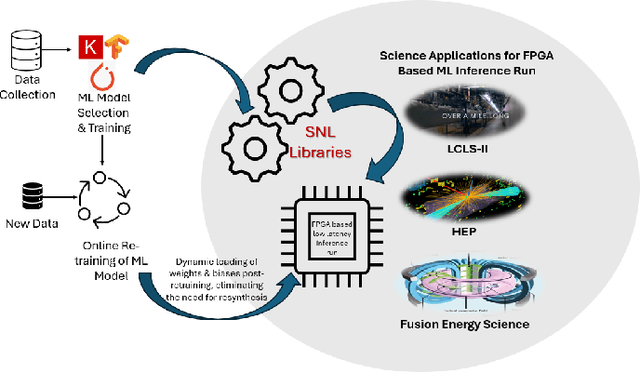
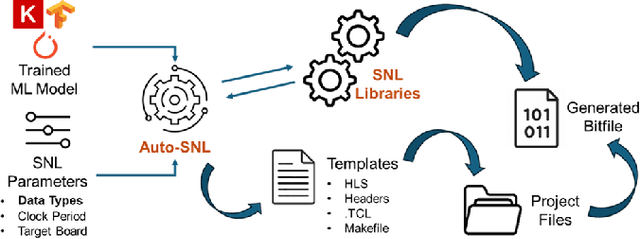


Abstract:The LCLS-II Free Electron Laser (FEL) will generate X-ray pulses for beamline experiments at rates of up to 1~MHz, with detectors producing data throughputs exceeding 1 TB/s. Managing such massive data streams presents significant challenges, as transmission and storage infrastructures become prohibitively expensive. Machine learning (ML) offers a promising solution for real-time data reduction, but conventional implementations introduce excessive latency, making them unsuitable for high-speed experimental environments. To address these challenges, SLAC developed the SLAC Neural Network Library (SNL), a specialized framework designed to deploy real-time ML inference models on Field-Programmable Gate Arrays (FPGA). SNL's key feature is the ability to dynamically update model weights without requiring FPGA resynthesis, enhancing flexibility for adaptive learning applications. To further enhance usability and accessibility, we introduce Auto-SNL, a Python extension that streamlines the process of converting Python-based neural network models into SNL-compatible high-level synthesis code. This paper presents a benchmark comparison against hls4ml, the current state-of-the-art tool, across multiple neural network architectures, fixed-point precisions, and synthesis configurations targeting a Xilinx ZCU102 FPGA. The results showed that SNL achieves competitive or superior latency in most tested architectures, while in some cases also offering FPGA resource savings. This adaptation demonstrates SNL's versatility, opening new opportunities for researchers and academics in fields such as high-energy physics, medical imaging, robotics, and many more.
FPGA-Accelerated SpeckleNN with SNL for Real-time X-ray Single-Particle Imaging
Feb 27, 2025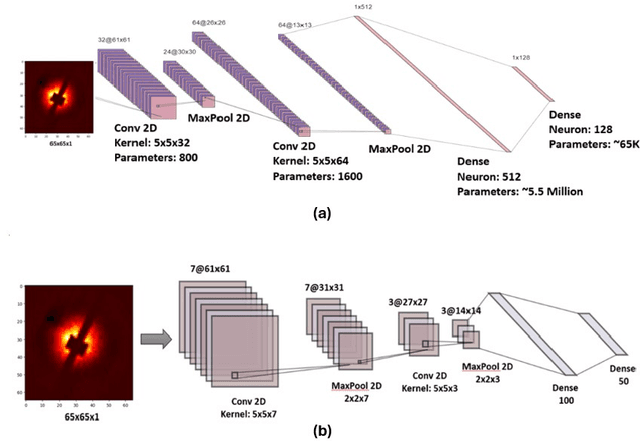
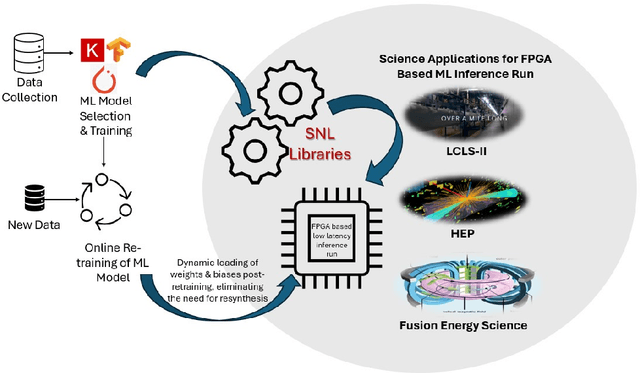
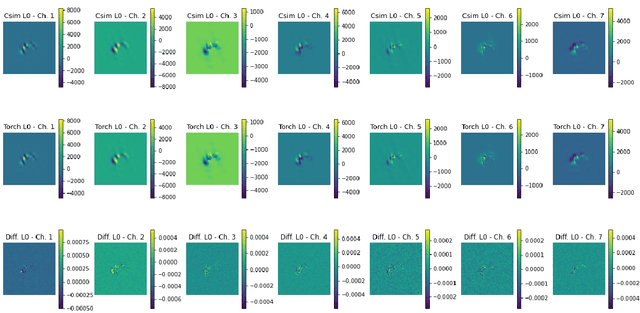

Abstract:We implement a specialized version of our SpeckleNN model for real-time speckle pattern classification in X-ray Single-Particle Imaging (SPI) using the SLAC Neural Network Library (SNL) on an FPGA. This hardware is optimized for inference near detectors in high-throughput X-ray free-electron laser (XFEL) facilities like the Linac Coherent Light Source (LCLS). To fit FPGA constraints, we optimized SpeckleNN, reducing parameters from 5.6M to 64.6K (98.8% reduction) with 90% accuracy. We also compressed the latent space from 128 to 50 dimensions. Deployed on a KCU1500 FPGA, the model used 71% of DSPs, 75% of LUTs, and 48% of FFs, with an average power consumption of 9.4W. The FPGA achieved 45.015us inference latency at 200 MHz. On an NVIDIA A100 GPU, the same inference consumed ~73W and had a 400us latency. Our FPGA version achieved an 8.9x speedup and 7.8x power reduction over the GPU. Key advancements include model specialization and dynamic weight loading through SNL, eliminating time-consuming FPGA re-synthesis for fast, continuous deployment of (re)trained models. These innovations enable real-time adaptive classification and efficient speckle pattern vetoing, making SpeckleNN ideal for XFEL facilities. This implementation accelerates SPI experiments and enhances adaptability to evolving conditions.
Analysis of Hardware Synthesis Strategies for Machine Learning in Collider Trigger and Data Acquisition
Nov 18, 2024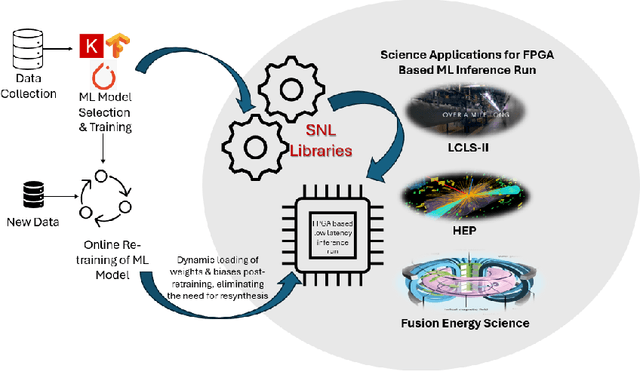

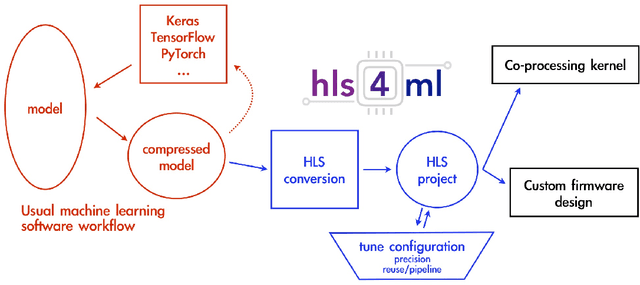

Abstract:To fully exploit the physics potential of current and future high energy particle colliders, machine learning (ML) can be implemented in detector electronics for intelligent data processing and acquisition. The implementation of ML in real-time at colliders requires very low latencies that are unachievable with a software-based approach, requiring optimization and synthesis of ML algorithms for deployment on hardware. An analysis of neural network inference efficiency is presented, focusing on the application of collider trigger algorithms in field programmable gate arrays (FPGAs). Trade-offs are evaluated between two frameworks, the SLAC Neural Network Library (SNL) and hls4ml, in terms of resources and latency for different model sizes. Results highlight the strengths and limitations of each approach, offering valuable insights for optimizing real-time neural network deployments at colliders. This work aims to guide researchers and engineers in selecting the most suitable hardware and software configurations for real-time, resource-constrained environments.
 Add to Chrome
Add to Chrome Add to Firefox
Add to Firefox Add to Edge
Add to Edge